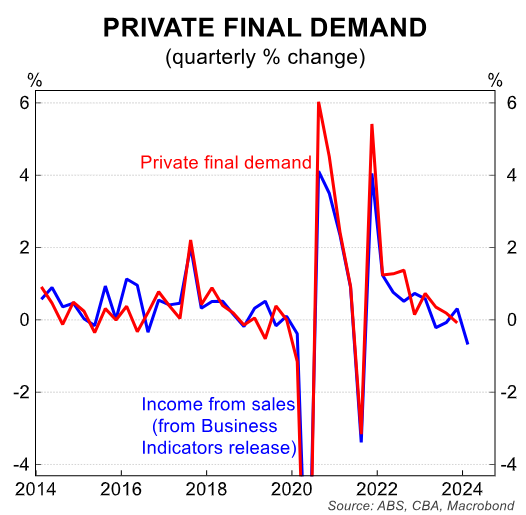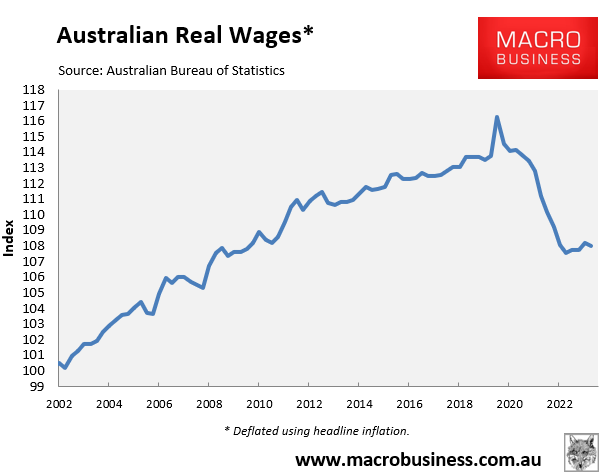All of the GDP partials have been released, suggesting that Wednesday’s Q1 national accounts will show a deepening per capita recession, led by the household sector.
CBA tips that Australia’s economy grew by a meagre 0.1% in Q1, well below the 0.6% increase in the population.
If true, this would see the annual rate of GDP growth fall to only 1.1%. That would mark the slowest annual pace of economic growth in Australia since Q4 1991 outside of the pandemic period:

Adjusting for population growth, GDP per capita will have fallen by around 1.5% over five quarters.
That, too, would mark the biggest decline in per capita GDP since the early 1990s recession.
Domestic final demand, which excludes the impact of net exports, is also expected to be weighed down by a weak household sector and the decline in dwelling investment.
Accordingly, final demand is likely to have outright fallen in Q1, despite the strongest population growth in around 70 years:

Alex Joiner, chief economist at IFM Investors, also noted on Twitter (X) that “real services spending has only been negative in two consecutive quarters in once in the history of the series”.
“We got a negative in Q4 ’23 and we know that goods/retail was soft in Q1. A big swing factor as services are ~30% of the real economy”:

Today’s Q1 national accounts release is shaping up to be a shocker.
Australian households are mired deep in recession, and they are cutting back on spending following the collapse in real wages back to 2010 levels:

The only thing papering over the economy’s cracks is the federal government’s extreme immigration program.

